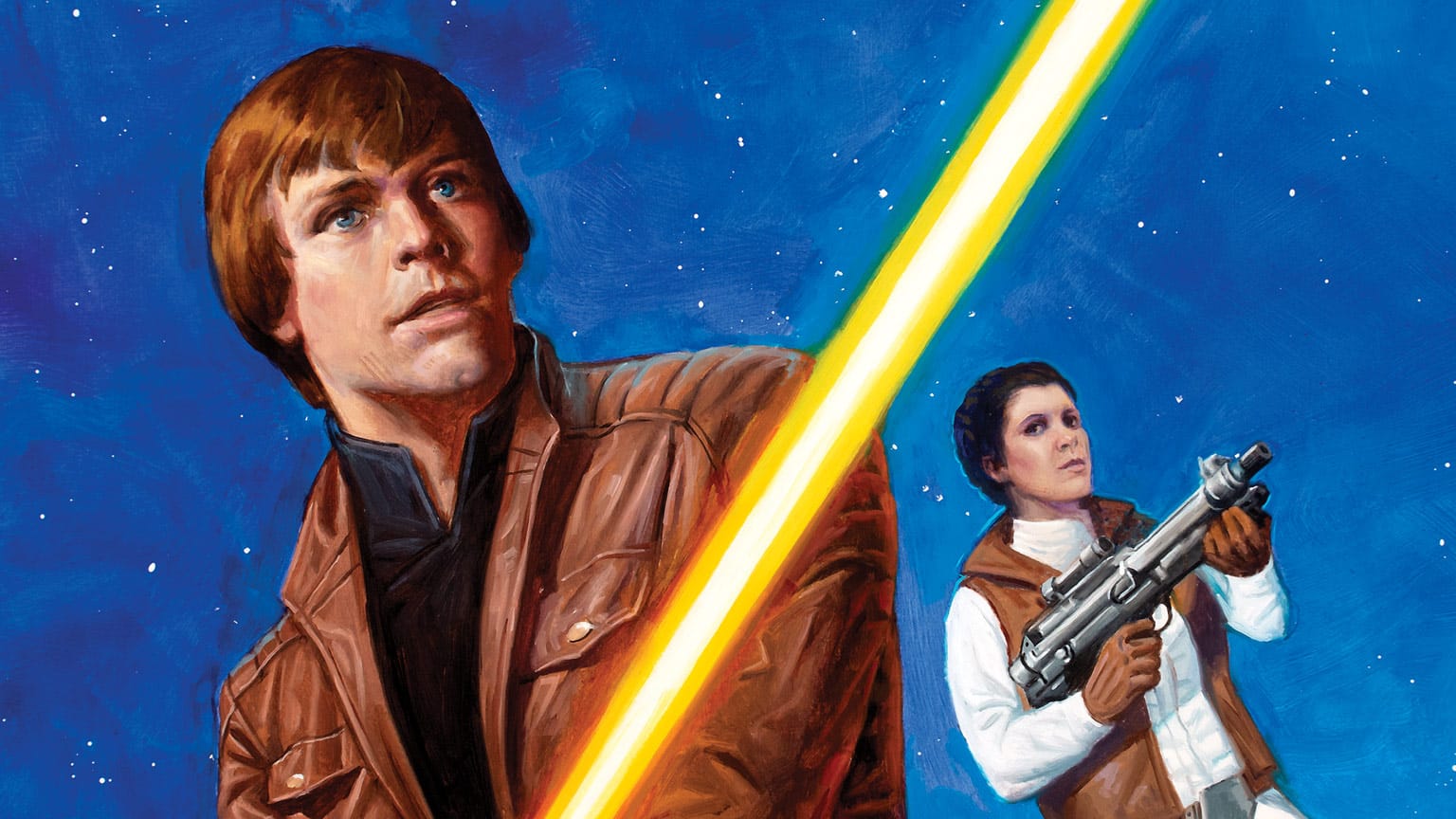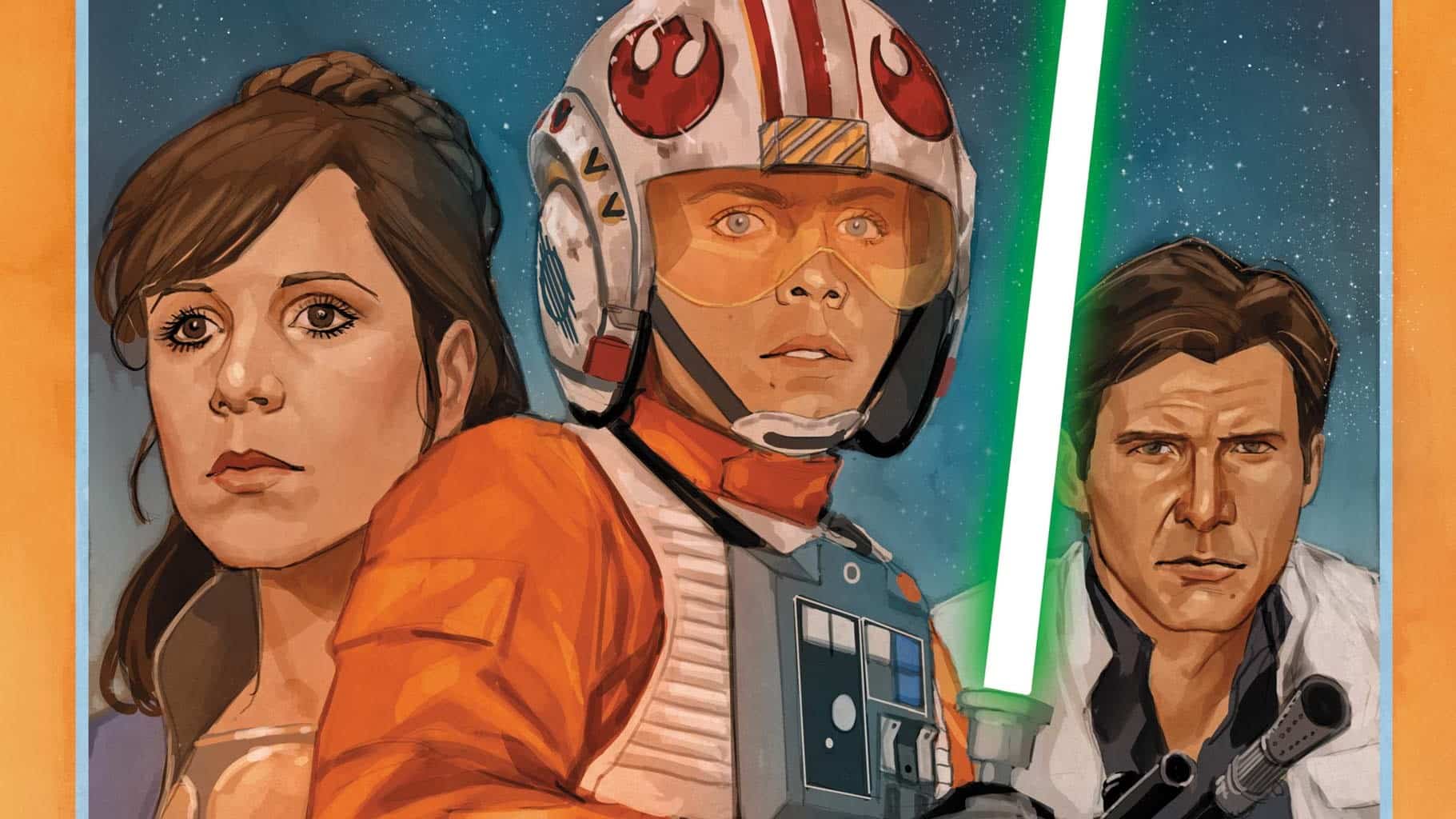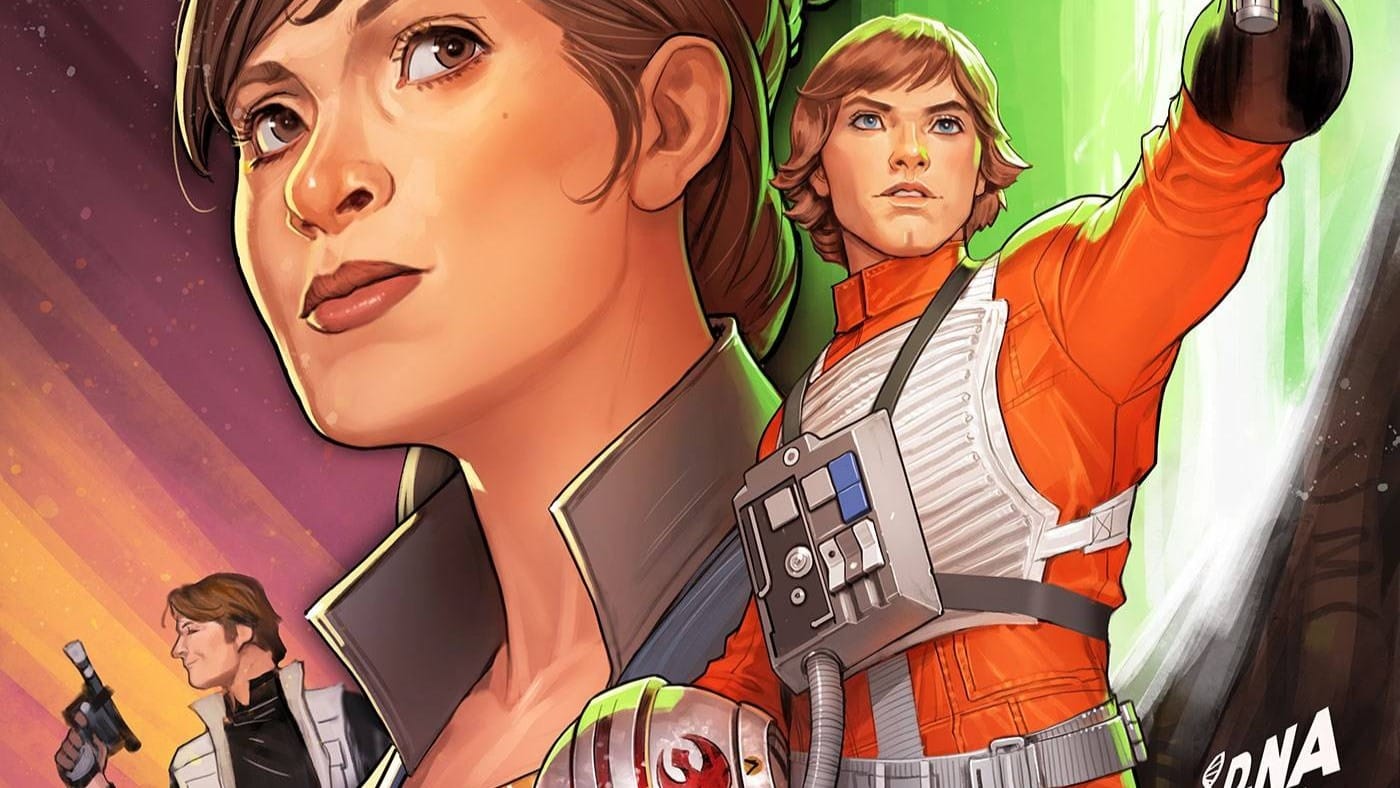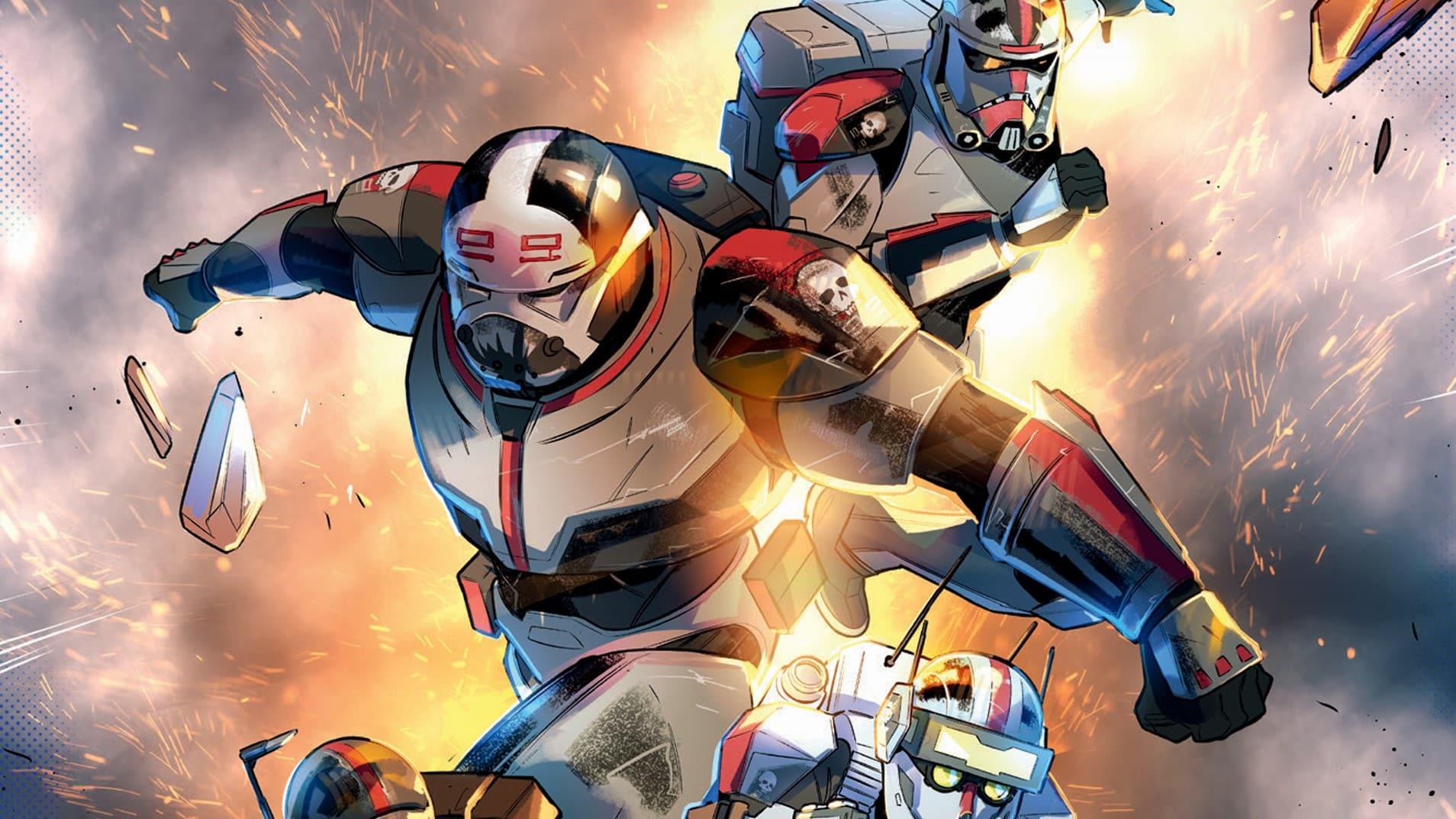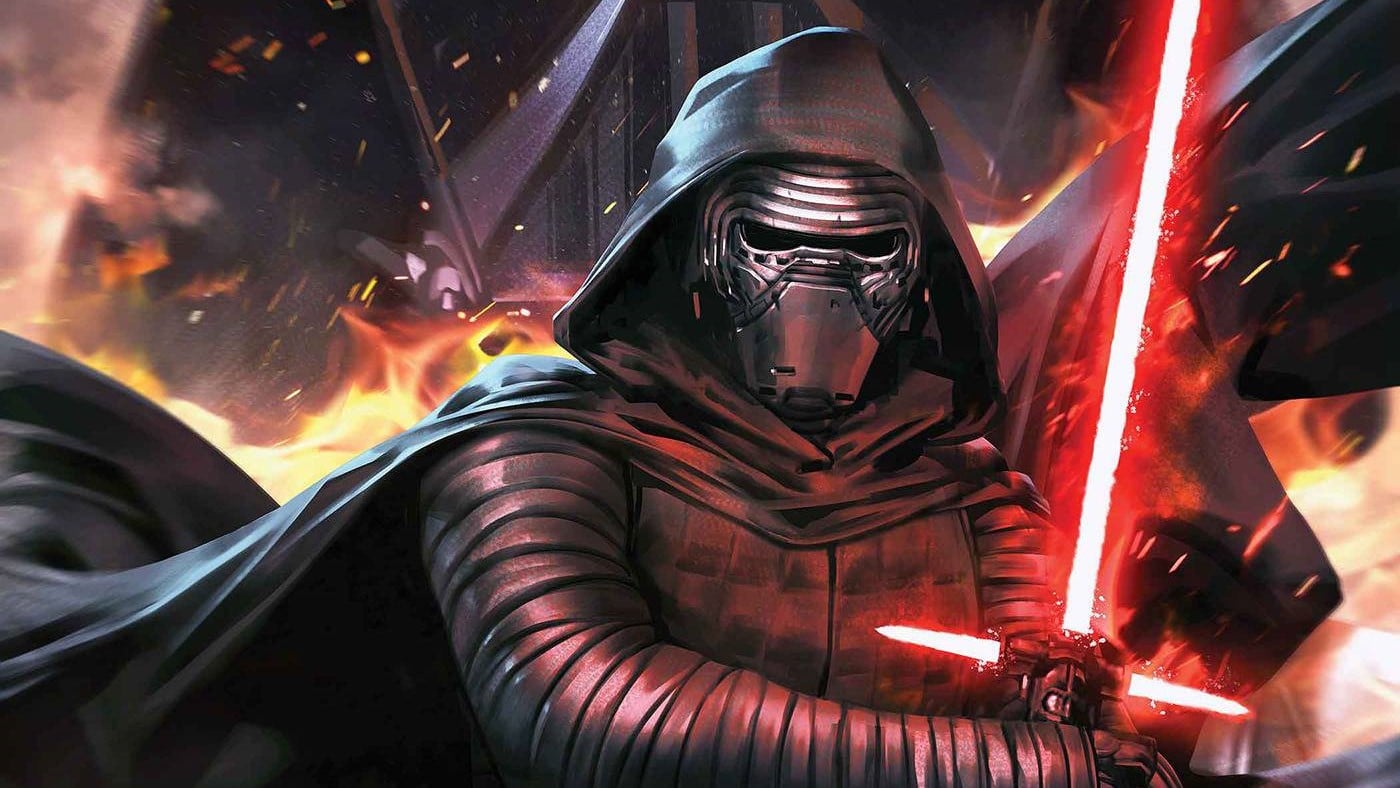The Rebellion celebrates putting itself back together as a new threat looms Star Wars #26, written by Charles Soule, art by Andrés Genolet, colored by Rachelle Rosenberg, and lettered by Clayton Cowles.
Star Wars #26 is a study in the way narrative tension can be deployed in different ways. Light on plot, it nevertheless marks the beginning of a new era for the series, as writer Charles Soule and his collaborators set up the next phase of the war between the newly-reunited Rebellion and the insidious Empire in some surprising ways.
After the previous issue’s “celebration”, Soule returns to the immediate narrative of the series here, opening the issue with a precision raid on an Imperial stronghold by the reunited rebels. It’s a minor but significant win for them, carried out with no rebel losses, no bystander deaths, and in full public view of Imperial citizenry. The Rebellion hasn’t defeated the Empire entirely, but the threat of Commander Zahra is, at least, no more, Luke Skywalker is back and he’s pretty cool (he’s got a fun laser sword!), and things are, overall, looking up, something even the seasoned commanders of the Rebellion (including Mon Mothma, Admiral Ackbar, Hera Syndulla from Rebels, and Leia must admit).
At this point, there is tension present, but it’s slight; because this series is set in a timeline which technically makes it a prequel to Return of the Jedi, readers know the Rebellion is close to total victory, even if they’re not quite there yet. At the same time, that knowledge introduces a different kind of tension than the one inherent in the question of whether or not the rebels will win. It is the tension of knowing that once the series reaches the events of Return of the Jedi, it ends (at least this iteration of it). There is a clock ticking, and Soule advances the hands of that clock significantly in the back half of the issue.
After checking in with the rebels, Star Wars #26 does a smash cut from Mon Mothma saying they have nothing but time to craft their ultimate victory to a secret Imperial facility which suggests that time may be more limited than she thinks (more tension: the Imperials – and readers – know something the rebels don’t). Here, we are introduced first to Lieutenant Jon Melton, aide to Moff Jerjerrod (a name which sticks out to those familiar with Return of the Jedi, immediately suggesting the purpose of this facility, thereby increasing the tension surrounding it). Jon is tasked with proving to an Imperial Security Bureau officer that the facility in question is secure. More tension: will Melton succeed in this goal, pleasing his superior and ensuring the continued operation of the facility? Melton is an Imperial, one of the bad guys, but the narrative has positioned him as the protagonist, so we don’t want him to fail.
We then meet Jon’s wife, Bev, who also works in the facility in what we might call a “blue collar” position. Jon tells his wife they need to talk; they take steps familiar to anyone who enjoys thrillers to prevent themselves from being overheard (tension again: will they be overheard? What is so bad that they have to say it obscured by the sound of running water?).
It’s revealed that Jon and Bev are secret agents of Crimson Dawn (and that Jon is either Crimson Dawn leader Qi’ra’s nephew – which is what some comic book speculators would have you believe, as this is already being cited as “key issue” for being the first appearance of Qi’ra’s nephew – or that “Auntie Q”, as he refers to her, is just a thinly-veiled codename). Readers learn they turned traitors due to their moral objections to the Empire’s actions. They decide they need to get word of this facility to the Rebel Alliance (tension: will they succeed? Is this the right course of action?); to do so without detection, they need to leave the facility. So they hijack the Security Bureau Officer’s shuttle as she prepares to depart the station (tension: will they make it off), seemingly killing her (will they be caught or suffer further repercussions for her death?).
As their ship flies away, two more revelations occur: we learn Jon and Bev have kids, which introduces even more tension to their circumstances. Now it’s not just a question of whether Jon and Bev, two free-thinking adults making their own decisions, will survive and complete their mission, but will their kids? Or will those kids grow up orphans after their traitor parents are thrown in Imperial jail or executed? At the same time as we learn Jon and Bev are parents, artist Andrés Genolet “zooms out” from their shuttle, confirming what sharp-memoried readers already suspected: the Imperial facility in question is the second Death Star.
All the various tension points, in-universe and real world, coalesce in that moment. Will Jon and Bev succeed (we know the Alliance learns of the second Death Star, but Jon and Bev are not “many Bothans)? Will their family survive? Does this mark the beginning of the end for this series, as it draws closer to the events of Return of the Jedi? How will Qi’ra and Crimson Dawn, who have loomed large over this post-”War of the Bounty Hunters” era without really doing anything of consequence, factor into things? Will they play a role in the story of how the Rebel Alliance learns about the new Death Star and sets in motion the final act of the original Star Wars trilogy?
This ending is not a cliffhanger, per se. No one is shooting at Jon and Bev as they race away from the Death Star. But the coalescing tension built up throughout the issue, from the cover by E.M. Gist (which has a smooth, painterly, almost Earl Norem-esque style in contrast to the the more simplistic, almost animation-inspired style of the interior art) to the final page reveal of the Death Star, nevertheless creates a desire to want to know what happens next, to see how and in what manner all that tension will break. It’s a subtle yet clever way to do the necessary job all chapters in a serialized narrative must do: entice the audience to come back for more.
Austin Gorton also reviews older issues of X-Men at the Real Gentlemen of Leisure website, co-hosts the A Very Special episode podcast, and likes Star Wars. He lives outside Minneapolis, where sometimes, it is not cold. Follow him @austingorton.bsky.social.

